Plotting temperature mapping in food storage involves creating a visual representation of temperature distribution within a storage area. This helps ensure that food is stored at safe temperatures to prevent spoilage and maintain quality. Here's a step-by-step guide on how to properly plot a temperature map:
Materials Needed:
- Temperature sensors (data loggers)
- Spreadsheet software, or specialized data visualization tools
- Computer for recording data
- MLV (Multi logger validation) software
Steps:
-
Select Monitoring Points: Identify key locations within the food storage area where temperature measurements need to be taken. These could include various shelves, corners, doors, and areas that might experience temperature variation.
-
Install Temperature Sensors: Place temperature sensors (data loggers) at the predetermined monitoring points. Ensure that these devices are accurately calibrated and properly positioned to capture the actual temperature of the food storage environment.
-
Record Temperature Readings: You need to take regular temperature readings at each monitoring point, sample period dependent on the sensitivity of the products which are being stored. This could range from 15 minutes to hourly even daily measurements. Consistency is key to capturing accurate temperature data.
-
Data Collection Period: Collect temperature data over a sufficient period to capture variations that occur due to factors like opening/closing doors, restocking, or changes in the external environment.
-
Organize Data: If using spreadsheet software, create a table with columns for time and temperature readings at each monitoring point. If using specialized software, follow its data input guidelines. Temprecord has developed software which gives you the ability to import multiple Temprecord .tr files into MLV (Multi logger validation) software and generate a report (including a colour-coded graph) in minutes. You are able to visualize temperature trends quickly and easily.
-
Heatmap:
- Use specialized software to create a temperature heatmap.
- Assign colours to temperature ranges (e.g., green for safe, yellow for caution, red for danger).
- Map the temperature values from each monitoring point onto the corresponding location on the heatmap.
-
Label and Annotate: Include clear labels and titles for the graph or heatmap, indicating the storage area, time period covered, and units of measurement.
-
Analyze and Interpret: Examine the plotted data to identify temperature patterns and variations. Pay attention to areas with consistently high or low temperatures and areas prone to rapid temperature changes.
-
Take Action: If you notice any temperature deviations from safe ranges, take appropriate corrective actions such as adjusting the storage layout, improving insulation, or enhancing temperature control mechanisms.
-
Regular Updates: Continuously monitor and update the temperature mapping as storage conditions change or are optimized. Regular reviews help ensure ongoing food safety and quality.
By following these steps, you can create an effective temperature map that helps maintain proper food storage conditions and prevents potential issues related to temperature fluctuations.
Using MLV software
|
MLV is designed to remove much of the manual labour associated with logger and environment validation. Key points are: ·Any mix of Temprecord logger variants or firmware revisions may be used, including Mon-T loggers. ·The loggers do not all need to be logging data with the same sample period. ·The loggers do not all need to be started together. MLV automatically time-aligns individual data files and any associated reference data. ·The loggers need not be stopped before data analysis can take place. ·Data from any arbitrary group of loggers can be processed. ·MLV does not require physical access to the loggers for analysis, only to the data files produced from them. ·No manual logging or retrieval of Hart reference data is required. MLV can log the meter output continuously and save the logged temperatures to a file. ·A reference is not required - the loggers can be checked against a constant value, against their collective mean, or against another single Temprecord logged data file. ·It is not necessary to interact with MLV between runs. ·Data analysis is more or less completely automatic. ·MLV incorporates a powerful project-based system that enables the user to save and quickly return to previous validation setups, and to quickly change settings and regenerate reports. ·Reports and plots are highly configurable. ·Optional username and password access control system |

